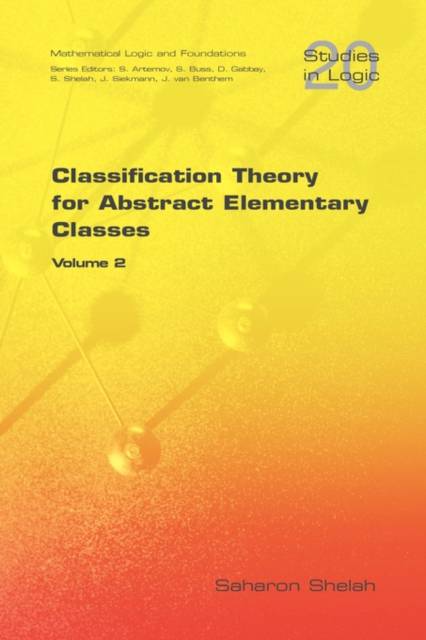
Je cadeautjes zeker op tijd in huis hebben voor de feestdagen? Kom langs in onze winkels en vind het perfecte geschenk!
- Afhalen na 1 uur in een winkel met voorraad
- Gratis thuislevering in België vanaf € 30
- Ruim aanbod met 7 miljoen producten
Je cadeautjes zeker op tijd in huis hebben voor de feestdagen? Kom langs in onze winkels en vind het perfecte geschenk!
- Afhalen na 1 uur in een winkel met voorraad
- Gratis thuislevering in België vanaf € 30
- Ruim aanbod met 7 miljoen producten
Zoeken
€ 54,95
+ 109 punten
Uitvoering
Omschrijving
An abstract elementary class (AEC) is a class of structures of a fixed vocabulary satisfying some natural closure properties. These classes encompass the normal classes defined in model theory and natural examples arise from mathematical practice, e.g. in algebra not to mention first order and infinitary logics. An AEC is always endowed with a special substructure relation which is not always the obvious one. Abstract elementary classes provide one way out of the cul de sac of the model theory of infinitary languages which arose from over-concentration on syntactic criteria. This is the second volume of a two-volume monograph on abstract elementary classes. It is quite self-contained and deals with three separate issues. The first is the topic of universal classes, i.e. classes of structures of a fixed vocabulary such that a structure belongs to the class if and only if every finitely generated substructure belongs. Then we derive from an assumption on the number of models, the existence of an (almost) good frame. The notion of frame is a natural generalization of the first order concept of superstability to this context. The assumption says that the weak GCH holds for a cardinal $\lambda$, its successor and double successor, and the class is categorical in the first two, and has an intermediate value for the number of models in the third. In particular, we can conclude from this argument the existence of a model in the next cardinal. Lastly we deal with the non-structure part of the topic, that is, getting many non-isomorphic models in the double successor of $ \lambda$ under relevant assumptions, we also deal with almost good frames themselves and some relevant set theory.
Specificaties
Betrokkenen
- Auteur(s):
- Uitgeverij:
Inhoud
- Aantal bladzijden:
- 702
- Taal:
- Engels
- Reeks:
Eigenschappen
- Productcode (EAN):
- 9781904987727
- Verschijningsdatum:
- 18/09/2009
- Uitvoering:
- Paperback
- Formaat:
- Trade paperback (VS)
- Afmetingen:
- 156 mm x 234 mm
- Gewicht:
- 966 g

Alleen bij Standaard Boekhandel
+ 109 punten op je klantenkaart van Standaard Boekhandel
Beoordelingen
We publiceren alleen reviews die voldoen aan de voorwaarden voor reviews. Bekijk onze voorwaarden voor reviews.









